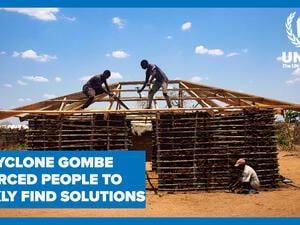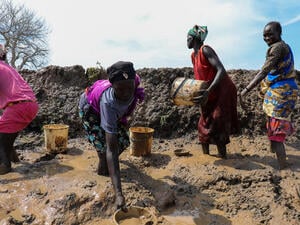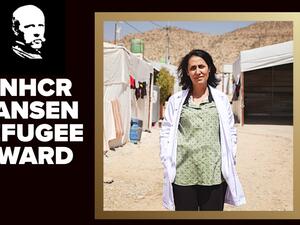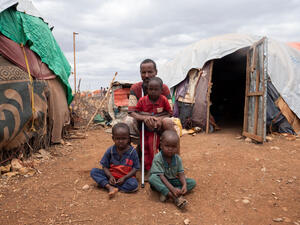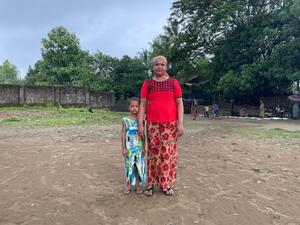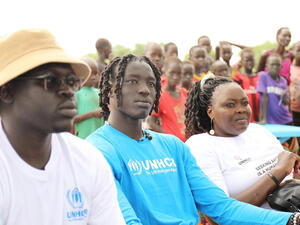An estimated 90,000 people return to Mogadishu; almost quarter of those displaced
An estimated 90,000 people return to Mogadishu; almost quarter of those displaced
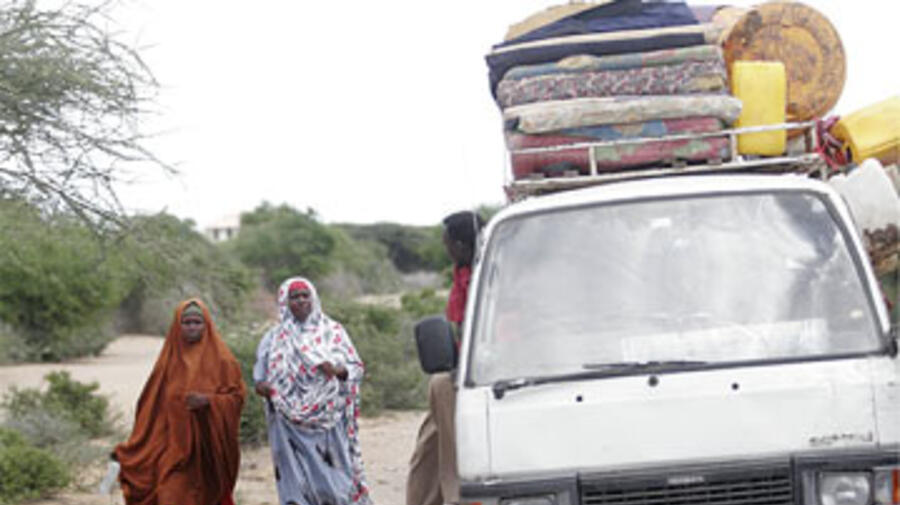
On the road. An estimated 90,000 people have returned to the Somali capital Mogadishu in recent weeks.
MOGADISHU, Somalia, June 1 (UNHCR) - The UN refugee agency estimates that up to 90,000 people may have returned to Mogadishu in recent weeks, or almost a quarter of those who fled fierce fighting earlier this year in the Somali capital.
The figure is based on monitoring of population movements inside Somalia by UNHCR and a network of partners. Most of the returnees come from the Shabelle and Bay regions of south and central Somalia. The figure represents just over 23 percent of the 391,000 Somalis estimated to have escaped from Mogadishu since February this year.
Many of those returning to Mogadishu have gone back to areas such as Waberi, Xamar, Jab-Jab and Medina districts which were not affected by the various rounds of fighting that pitted Ethiopian-backed forces of the Transitional Federal Government (TFG) against insurgents.
Despite the relatively large number of returnees, living conditions in Mogadishu remain difficult for people going back as well as for those who stayed in the capital throughout the conflict. The city remains without electricity and running water, while sanitation is a major concern as garbage remains uncollected in many neighbourhoods.
People complain that they have lost their means of livelihood. Former roadside traders, for example, complain that their business structures have been demolished by authorities who say these structures are a security threat. In many areas, schools have remained closed.
On Tuesday, UNHCR joined the UN Children's Fund (UNICEF), the World Food Programme (WFP) and the UN Office for the Coordination of Humanitarian Affairs (OCHA) on a two-day visit to Mogadishu to look at possibilities of bringing more aid to needy populations. The team held meetings with the TFG as well as with civil society and implementing partners to agree on ways of reaching the needy.
The assistance targeting some 300,000 people in Mogadishu would be part of a one-time aid package to help people settle back into the war-torn capital. In April, UNHCR distributed aid to some 50,000 displaced Somalis living in nearby Afgoye and surrounding areas. Together with aid delivered by other organizations, the short-term needs for shelter and basic household supplies for nearly 70 percent of those displaced outside Mogadishu were met.
Even as small numbers of people move back to Mogadishu, hundreds of thousands of others remain in various regions of Somalia such as Bay, Galgaduud, Mudug and Hiran. There are reports of further displacements of people living along the Shabelle River, which has overflowed destroying shelters and crops.
Many displaced people remain reluctant to return to Mogadishu. They include families and individuals who were previously displaced within the city and lived for nearly 16 years in public buildings that have now been repossessed by the government.
Some of those displaced earlier from Mogadishu now say they have nowhere to return to in the capital, others are fearful for their safety and prefer to wait and see how the situation unfolds. Some of the displaced say they would like to return but they do not have money for transport back to Mogadishu. In some cases, returnees have had to wait for up to three days for transport.

